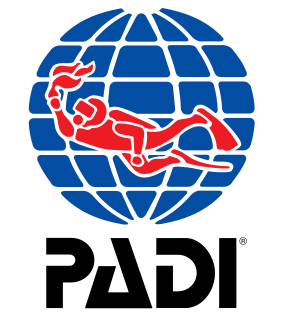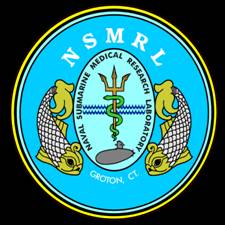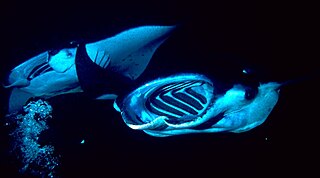
The Professional Association of Diving Instructors (PADI) is a recreational diving membership and diver training organization founded in 1966 by John Cronin and Ralph Erickson. Cronin was originally a NAUI instructor who decided to form his own organization with Erickson, and to break diver training down into several modular courses instead of the single universal course then prevalent.

Manta rays are large rays belonging to the genus Mobula. The larger species, M. birostris, reaches 7 m (23 ft) in width, while the smaller, M. alfredi, reaches 5.5 m (18 ft). Both have triangular pectoral fins, horn-shaped cephalic fins and large, forward-facing mouths. They are classified among the Myliobatiformes and are placed in the family Myliobatidae. They have the largest brains and brain to body ratio of all fish, and can pass the mirror test.

The National Trails System is a series of trails in the United States designated "to promote the preservation of, public access to, travel within, and enjoyment and appreciation of the open-air, outdoor areas and historic resources of the Nation". There are four types of trails: the national scenic trails, national historic trails, national recreation trails, and connecting or side trails. The national trails provide opportunities for hiking and historic education, as well as horseback riding, biking, camping, scenic driving, water sports, and other activities. The National Trails System consists of 11 national scenic trails, 19 national historic trails, over 1,300 national recreation trails, and seven connecting and side trails, as well as one national geologic trail, with a total length of more than 88,000 mi (140,000 km). The scenic and historic trails are in every state, and Virginia and Wyoming have the most running through them, with six.

The Flower Garden Banks National Marine Sanctuary (FGBNMS) is a United States National Marine Sanctuary located 100 nautical miles (190 km) offshore of Galveston, Texas, in the northwestern Gulf of Mexico. It contains the northernmost coral reefs in the United States.

The Golden Gate Biosphere Network is an internationally recognized voluntary coalition of federal, state, and local government agencies, nonprofit organizations, universities, and private partners within the Golden Gate Biosphere (GGB) region. The Network works towards protecting the biosphere region’s biodiversity and conserving its natural resources to maintain the quality of life for people within the region. The Network has been part of the UNESCO Man and Biosphere Programme since 1988 and is part of the US Biosphere Network and EuroMAB. It is recognized by UNESCO due to the significant biodiversity of the region, as well as the Network's efforts to demonstrate and promote a balanced relationship between humans and the biosphere.

The Royal Australasian College of Surgeons (RACS) is the leading advocate for surgical standards, professionalism and surgical education in Australia and New Zealand.

Shark tourism is a form of eco-tourism that allows people to dive with sharks in their natural environment. This benefits local shark populations by educating tourists and through funds raised by the shark tourism industry. Communities that previously relied on shark finning to make their livelihoods are able to make a larger profit from diving tours while protecting the local environment. People can get close to the sharks by free- or scuba diving or by entering the water in a protective cage for more aggressive species. Many of these dives are done by private companies and are often baited to ensure shark sightings, a practice which is highly controversial and under review in many areas.
Rubicon Foundation, Inc. is a non-profit organization devoted to contributing to the interdependent dynamic between research, exploration, science and education. The foundation, started in 2002, is located in Durham, North Carolina and is primarily supported by donations and grants. Funding has included the Office of Naval Research from 2008 to 2010. Gibson, Dunn & Crutcher has provided pro bono services to assist in copyright searches and support.

The Naval Submarine Medical Research Laboratory (NSMRL) is located on the New London Submarine Base in Groton, Connecticut. The laboratory's mission is to protect the health of American sailors, focused on submarines and scuba diving. It is a subordinate command of the Naval Medical Research Center.

Captain Trevor Jackson is an Australian technical diver, shipwreck researcher, author and inventor. In 2002 he staged what became known as the "Centaur Dive", which subsequently led to the gazetted position of the sunken Hospital Ship AHS Centaur being questioned. Jackson is the inventor of the 'Sea Tiger' lost diver location system, and an author on the subject of wreck diving.

The Maldives, officially the Republic of Maldives, is a small archipelagic state in South Asia. It lies in the Indian Ocean southwest of Sri Lanka and India, about 700 kilometres (430 mi) from the Asian continent's mainland. The chain of 26 atolls stretches across the Equator from Ihavandhippolhu Atoll in the north to Addu Atoll in the south. The land area is roughly 298 square kilometres. Malé is the capital.

A manta ray night dive is a scuba diving excursion to view manta rays.
The Funafuti Conservation Area is a marine conservation area covering 33 square kilometers of reef, lagoon and motu (islets) on the western side of Funafuti atoll in Tuvalu. The marine environment of the conservation area includes reef, lagoon, channel and ocean; and are home to many species of fish, corals, algae and invertebrates. The islets are nesting sites for the green sea turtle and Fualopa hosts a breeding colony of black noddy.

Hannah Fraser, known professionally as Hannah Mermaid, is a professional model, actress, dancer, and performer who specialises in underwater and ocean-oriented freediving performances, often in mermaid costume. She is a central figure in modern mermaiding and is an ocean ecology activist.
Dení Ramírez Macías is a Mexican marine biologist ocean scientist, and conservationist, and director of Whale Shark México since 2003. She leads the "Giants of Peru" project of the Save Our Seas Foundation.
Valerie Olson van Heest is an American author, explorer, and museum exhibit designer. She is co-founder of the Michigan Shipwreck Research Association.

Sea rewilding is an area of environmental conservation activity which focuses on rewilding, restoring ocean life and returning seas to a more natural state. Sea rewilding projects operate around the world, working to repopulate a wide range of organisms, including giant clams, sharks, skates, sea sturgeons, and many other species. Rewilding marine and coastal ecosystems offer potential ways to mitigate climate change and sequester carbon. Sea rewilding projects are currently less common than those focusing on rewilding land, and seas are under increasing stress from the blue economy – commercial activities which further stress the marine environment.

The Outdoor Circle is a nonprofit organization in Hawaii focused on conservationism. The organization was founded in 1912 by a group of seven women including Cherilla Storrs Lowrey with the goal of beautifying Honolulu and opposing the use of billboards in Hawaii; members almost immediately began planting trees with the organization after its establishment, leading the program director to estimate in 2020 that the Circle had planted "tens of thousands of trees" across the state.














